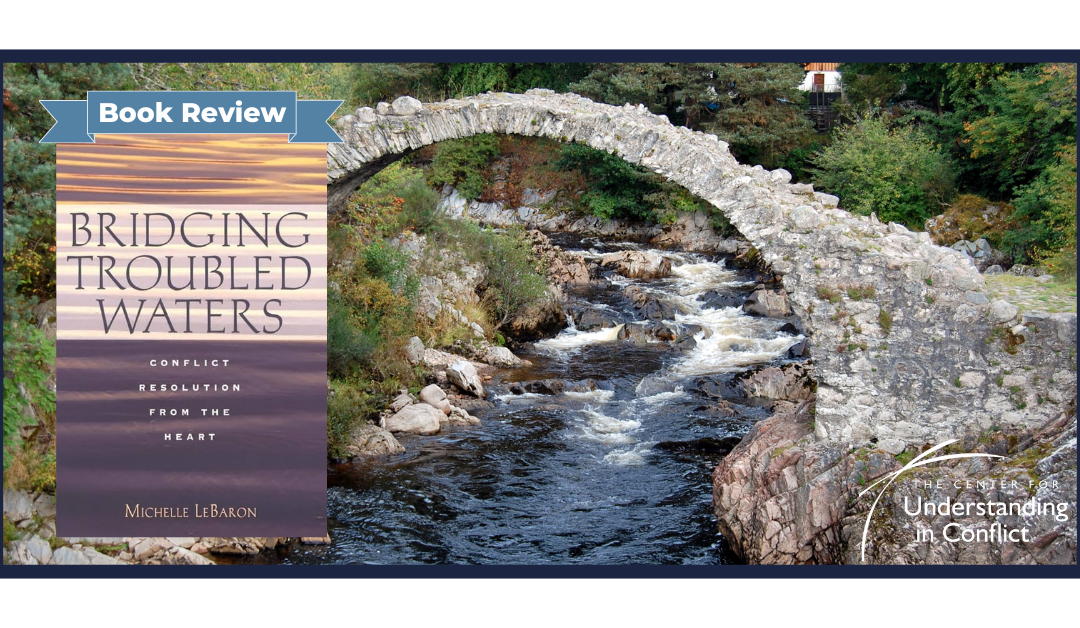Michelle LeBaron’s Bridging Troubled Waters: Conflict Resolution from the Heart presents an enlightening exploration of conflict resolution that emphasizes the human and emotional aspects often overlooked in conventional approaches. The book’s profound emphasis on emotional intelligence, cultural awareness, and deep listening aligns with the understanding-based approach, offering an inspiring lens through which to examine and address conflict.
LeBaron’s work is grounded in the belief that effective conflict resolution must engage with the full spectrum of human experience, not just the rational or logical components. This resonates deeply with the understanding-based approach, which prioritizes the relational dynamics and underlying interests of all parties involved. The author argues that conflicts cannot be truly resolved unless we consider the emotional and cultural contexts in which they occur. This holistic view challenges the more transactional approaches that often dominate the field, where the focus is on settling rather than fostering mutual understanding and connection.
One of the book’s core strengths is its emphasis on the role of culture in conflict resolution. LeBaron delves into the importance of cultural fluency, urging practitioners to recognize and respect the diverse backgrounds and values that individuals bring to the table. This perspective aligns closely with the understanding-based approach, which encourages mediators to move beyond surface-level issues and explore the deeper narratives and identities that shape people’s actions and reactions in conflict situations. By appreciating these cultural nuances, mediators can facilitate conversations that are not just about resolving a particular dispute but about building bridges of understanding that can prevent future conflicts.
The focus on the heart—on the emotional and intuitive dimensions of conflict—offers a powerful complement to the understanding-based approach. She encourages mediators to cultivate empathy and to create spaces where parties feel safe to express their emotions and vulnerabilities. This approach is essential in understanding-based mediation, where the goal is not merely to negotiate terms but to foster a genuine understanding of each party’s perspective. By acknowledging and validating emotions, mediators can help parties move past entrenched positions and towards collaborative solutions that honor the deeper needs and values at play.
Another significant contribution of Bridging Troubled Waters is its discussion of the importance of creativity and the arts in conflict resolution. LeBaron advocates for using metaphor, storytelling, and other creative practices as tools to unlock new ways of seeing and understanding conflicts. This creative dimension aligns with the understanding-based approach’s emphasis on dialogue and exploration. By encouraging parties to engage with conflict in imaginative and non-linear ways, mediators can help them break free from rigid thinking and discover innovative solutions that might not have emerged through more conventional problem-solving methods.
LeBaron also addresses the role of the mediator as a facilitator of transformation. She views conflict as an opportunity for personal and relational growth, a perspective that resonates strongly with the understanding-based approach. Rather than seeing conflict as a problem to be solved, LeBaron and the understanding-based model both view it as a chance to deepen relationships and foster greater understanding. This transformative potential, which can lead to personal and relational growth, is central to the understanding-based approach, where the focus is on helping parties find their own resolutions through dialogue and mutual recognition rather than imposing solutions from the outside.
However, while LeBaron’s work shares many affinities with the understanding-based approach, there are also important distinctions. LeBaron’s emphasis on emotional and cultural dimensions sometimes leads to a more rigid stance, suggesting specific practices or techniques for mediators to employ. In contrast, the understanding-based approach tends to be more process-oriented, focusing on facilitating a dialogue that allows the parties themselves to determine the best way forward. While both approaches value empathy and deep listening, the understanding-based model emphasizes the autonomy of the parties and the mediator’s role as a guide rather than a director.
LeBaron encourages mediators to take a more active role in shaping the mediation process, mainly through creative interventions. While the understanding-based approach is not opposed to creativity, it prioritizes the natural flow of conversation and the organic development of understanding between the parties. This subtle difference reflects a broader philosophical divergence: LeBaron’s approach is more eclectic, drawing from various disciplines and practices. At the same time, the understanding-based model is more rooted in a specific relational framework that emphasizes the co-creation of meaning and solutions.
Bridging Troubled Waters: Conflict Resolution from the Heart offers a compelling and compassionate vision of conflict resolution that resonates strongly with the principles of the understanding-based approach. By highlighting the importance of emotional intelligence, cultural awareness, and creativity, LeBaron provides valuable insights that can enhance the practice of any mediator committed to fostering genuine understanding and connection. The book’s core message, which aligns closely with the understanding-based approach’s commitment to deep, relational engagement in the resolution of conflict, is a unifying force for mediators looking to enrich their practice with a more holistic and heart-centered perspective.
